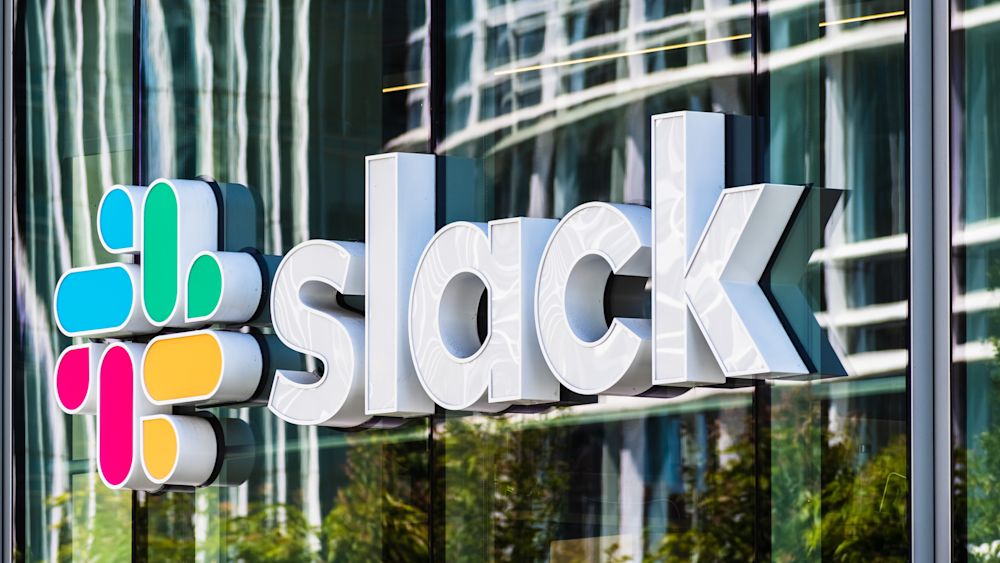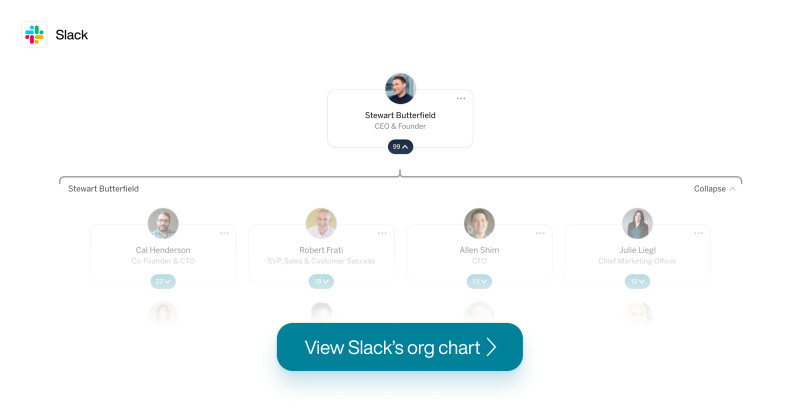- Iterate
- Meet The Team
- Exclusive Org Chart: The Most Powerful Executives at Slack in 2020
Exclusive Org Chart: The Most Powerful Executives at Slack in 2020
Table of contents
The Org has identified the most influential people behind the scenes at business communication platform Slack. Here’s our exclusive org chart of the top executives and their roles.

Meet the team behind Slack
Slack cofounder and CTO Cal Henderson, who oversees Slack’s engineering team and sets the technical vision for the company, was named a Fortune 40 under 40 honoree in 2019 and recognized by the World Economic Forum as a Young Global Leader. Henderson had previously built and led the engineering teams at Flickr and has become a leading figure in engineering scalability.
Also with Slack from the start is VP of customer experience Ali Rayl. Rayl, who joined Slack during its conception as the director of QA for Tiny Speck, is responsible for making the user experience simpler and more productive. Rayl said the team aims to cultivate a culture of love, and to achieve that, she hires support reps with emotional intelligence and writing skills.
Of Slack’s 12 executive team members, five have come from Salesforce, including chief marketing officer Julie Liegl; senior VP of sales and customer success Robert Frati; VP business and corporate development Brad Armstrong; general counsel David Schellhase; and VP global head of consumer success and services Christina Kosmowski.
CFO Allen Shim was the VP of finance and treasury at YuMe prior to coming to Slack, where he is responsible for the financial management strategy, overseeing global operations, finance, accounting, corporate strategy, treasury, tax, investor relations, business analytics and IT. CPO Tamar Yehoshua, who oversees product strategy and development, design, and research, was previously a VP at Google.
Senior VP of engineering, Allan Leinwand, previously served as an adjunct professor at the University of California, Berkeley, and was the CTO at ServiceNow, before joining Slack in 2018. Senior VP of people Robby Kwok was at adtech company TellApart (acquired by Twitter), and joined Slack in 2016, now overseeing global recruiting, people operations, total rewards, learning and development and program management. All-in-all, there is no questioning the experience at the helm of the expanding company.
Although Slack has continued to grow revenues and cut losses each quarter, the company is not without its challengers—most notably Microsoft’s Teams program.
The new partnership between Slack and Amazon will help the company stay competitive with rival platforms, and cloud-industry analyst Daniel Newman told Business Insider it was a chance for Amazon to look under Slack’s hood and see if it would be a good fit for acquisition.
Butterfield said the partnership allowed both companies to scale to meet demand and deliver enterprise grade offerings to customers. “The future of enterprise software will be driven by the combination of cloud services and workstream collaboration tools,” he said.
--
Sign up now: Stay up to date, level up and hire better with our behind the scenes newsletters at the world’s top startups.
In this article


The ORG helps
you hire great
candidates
Free to use – try today
